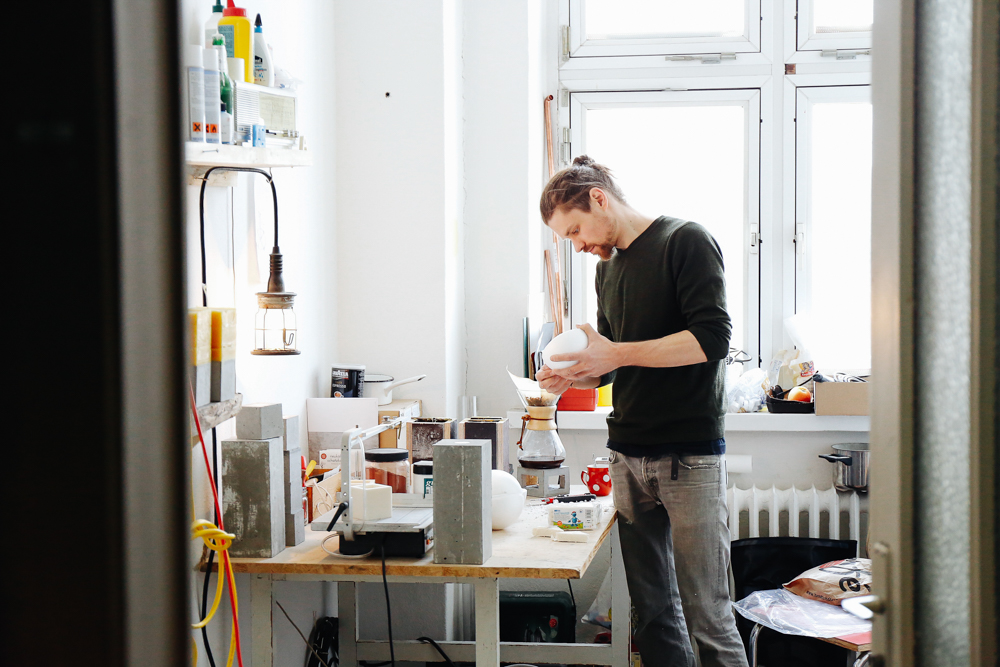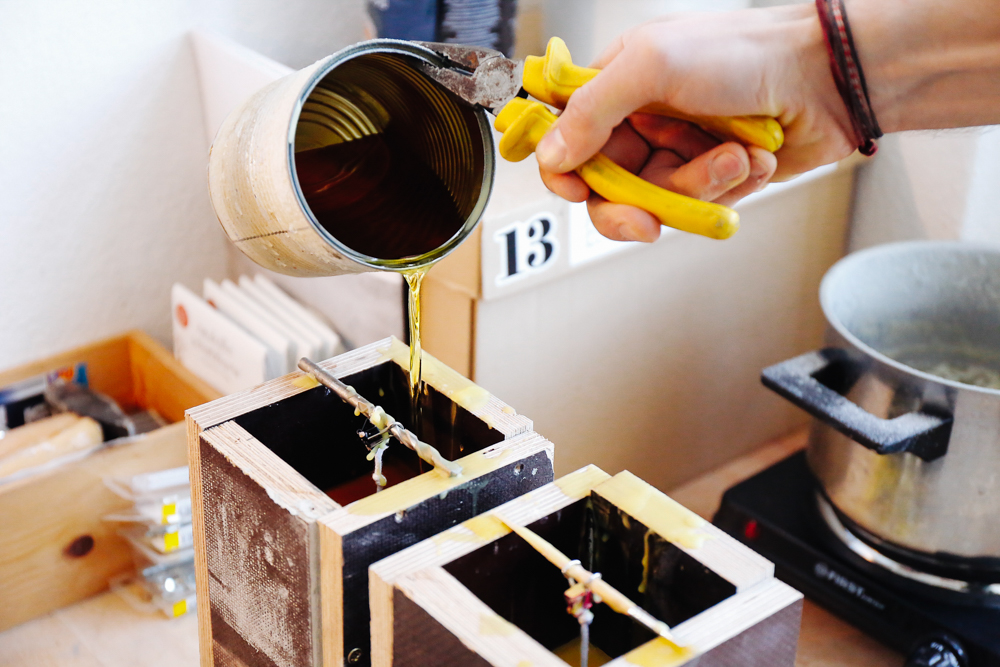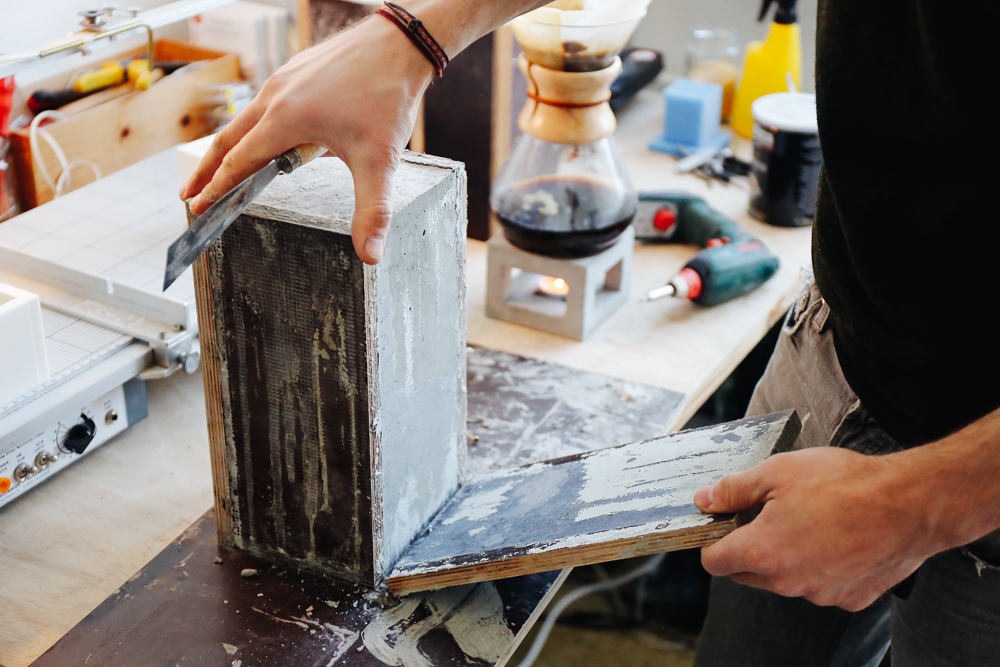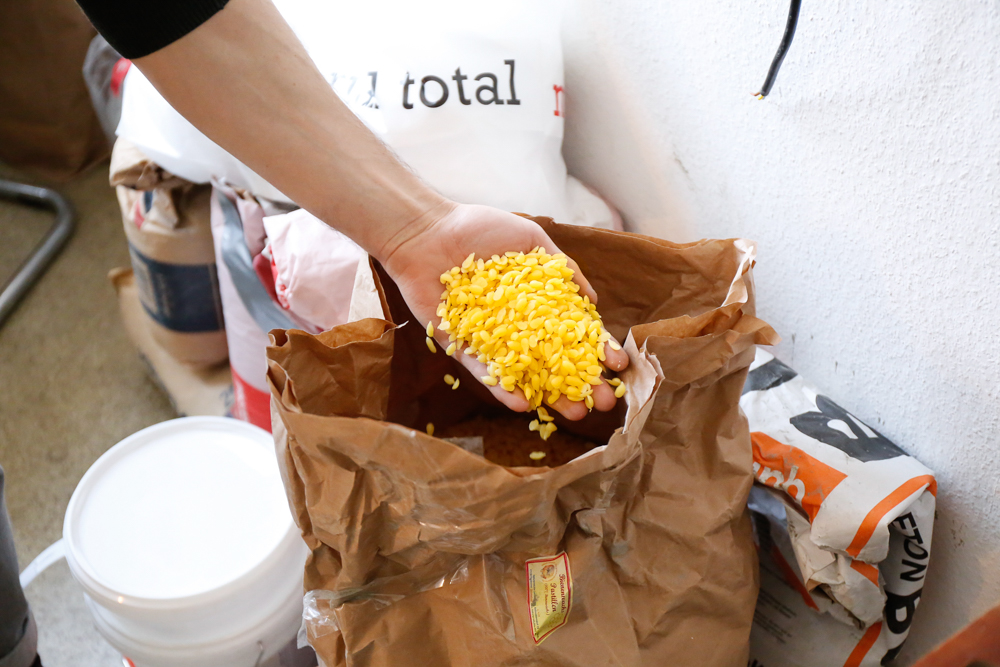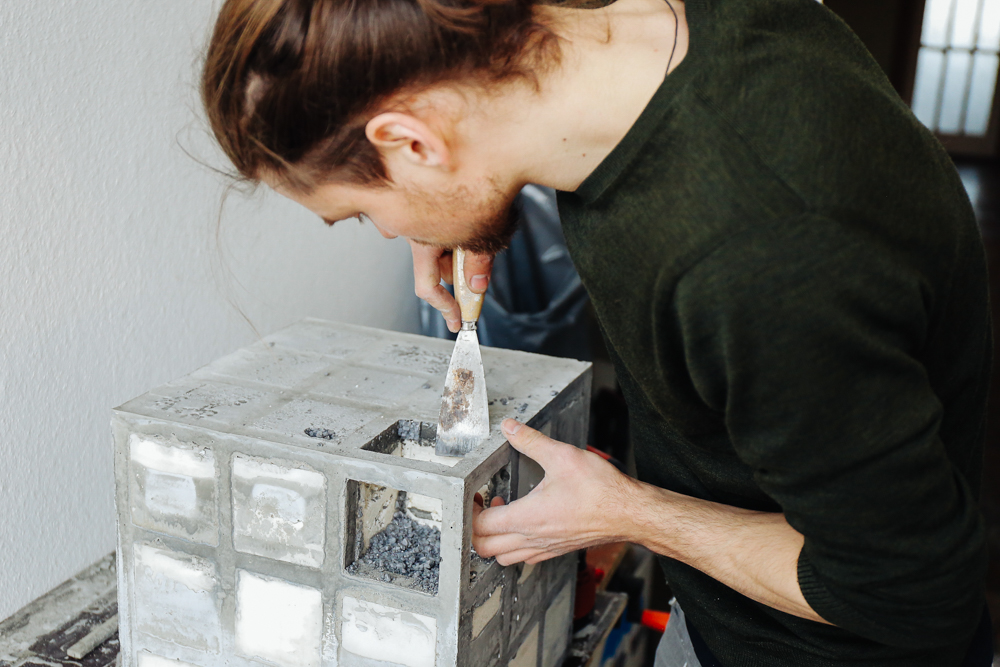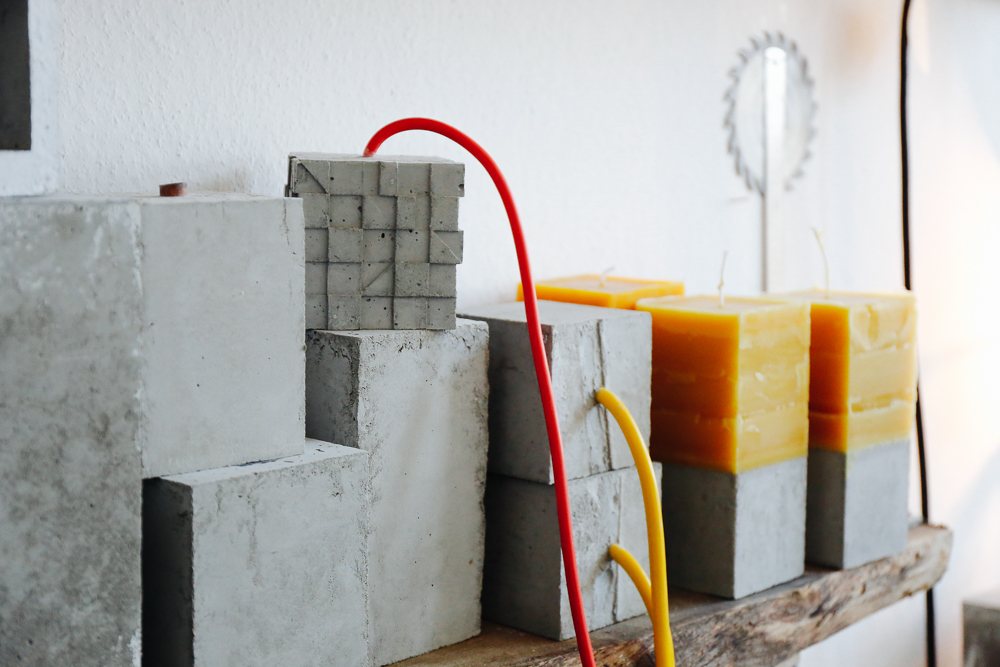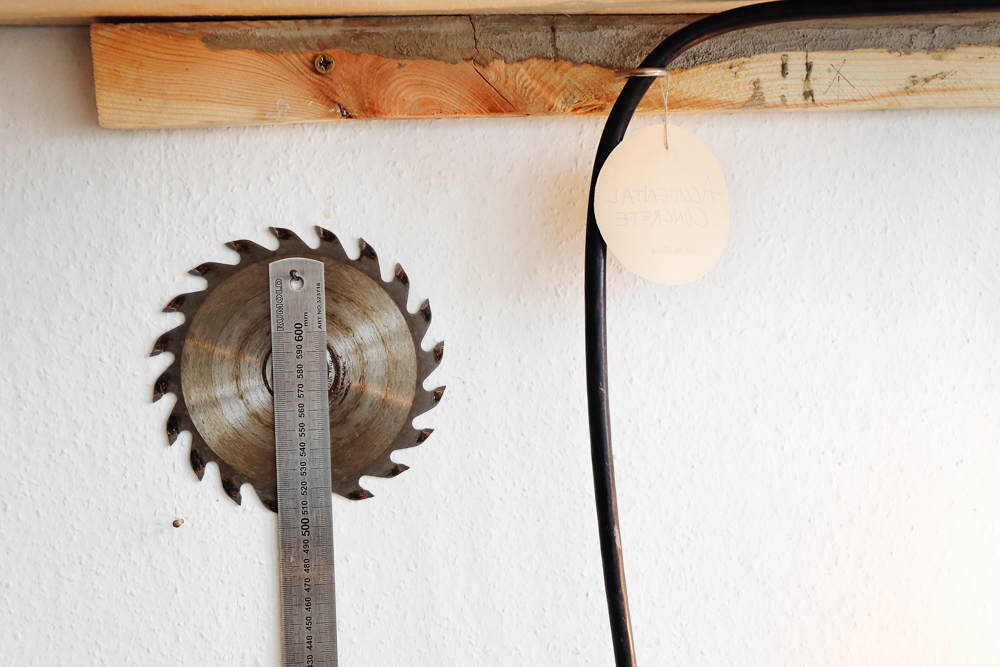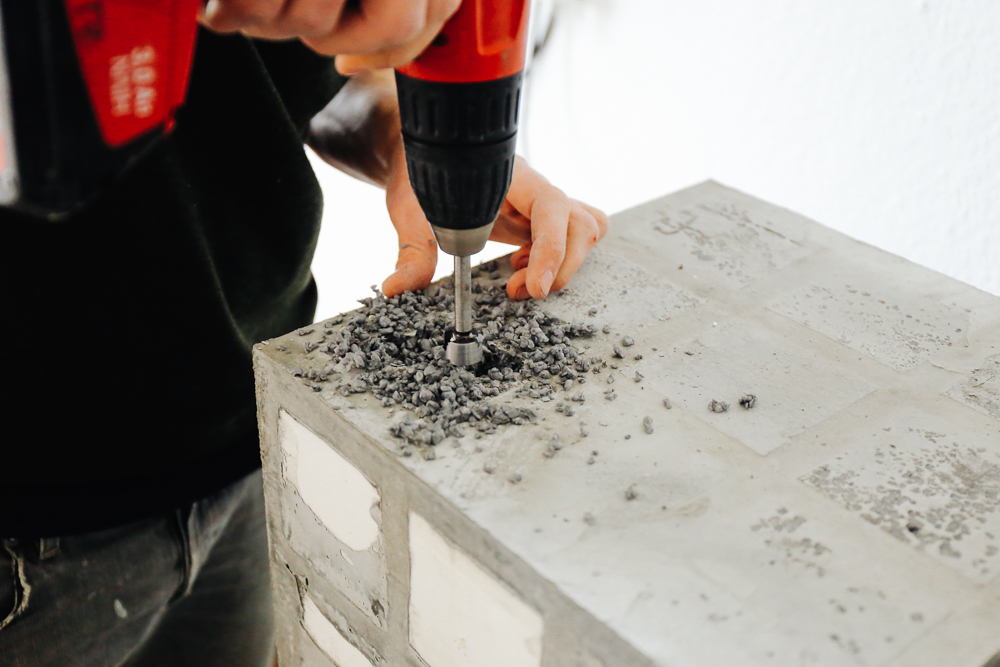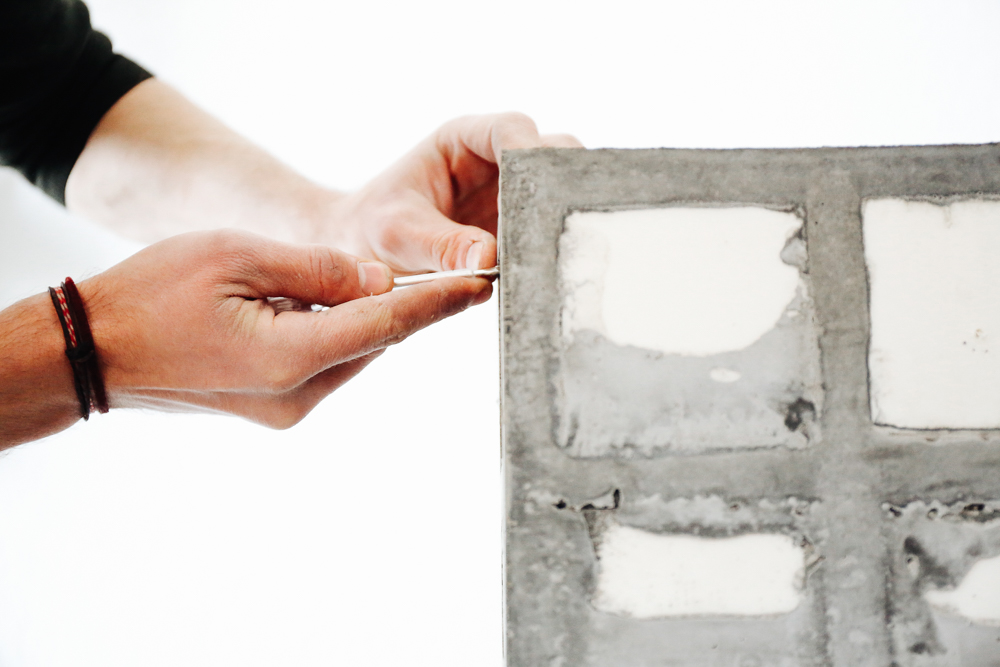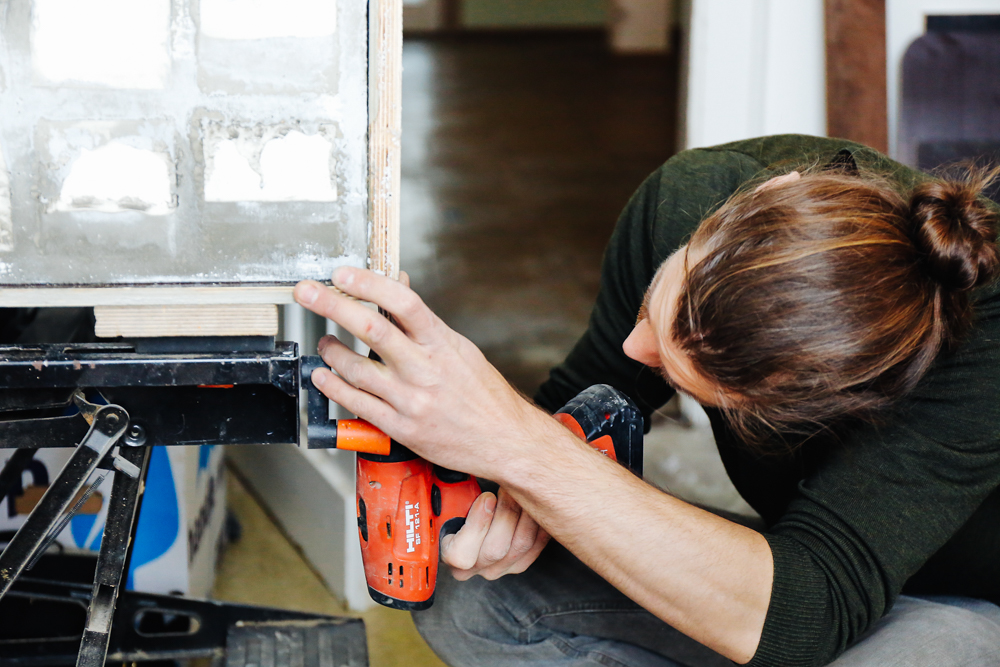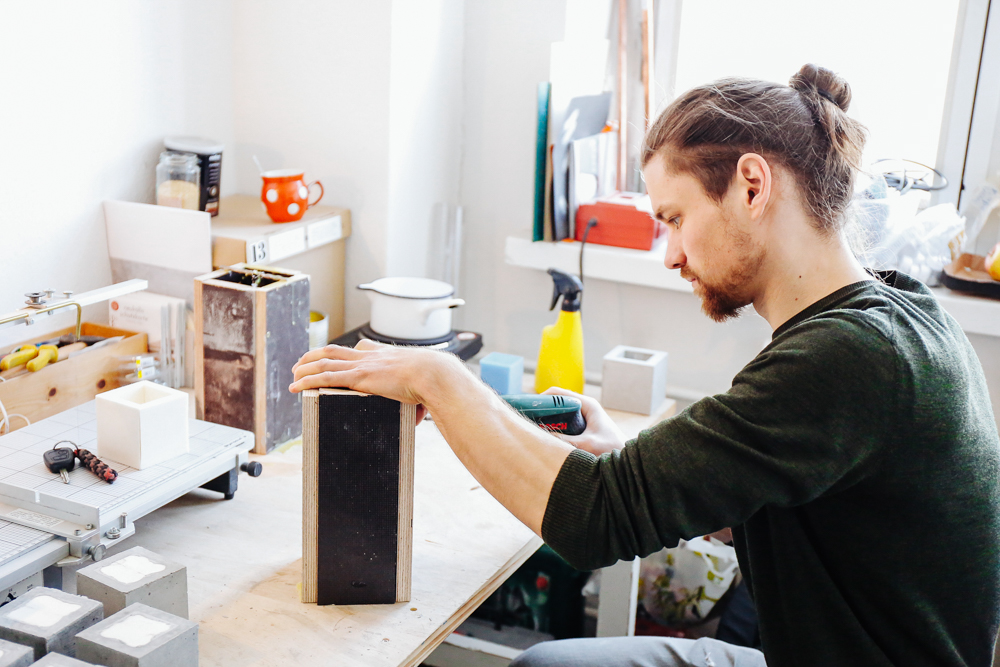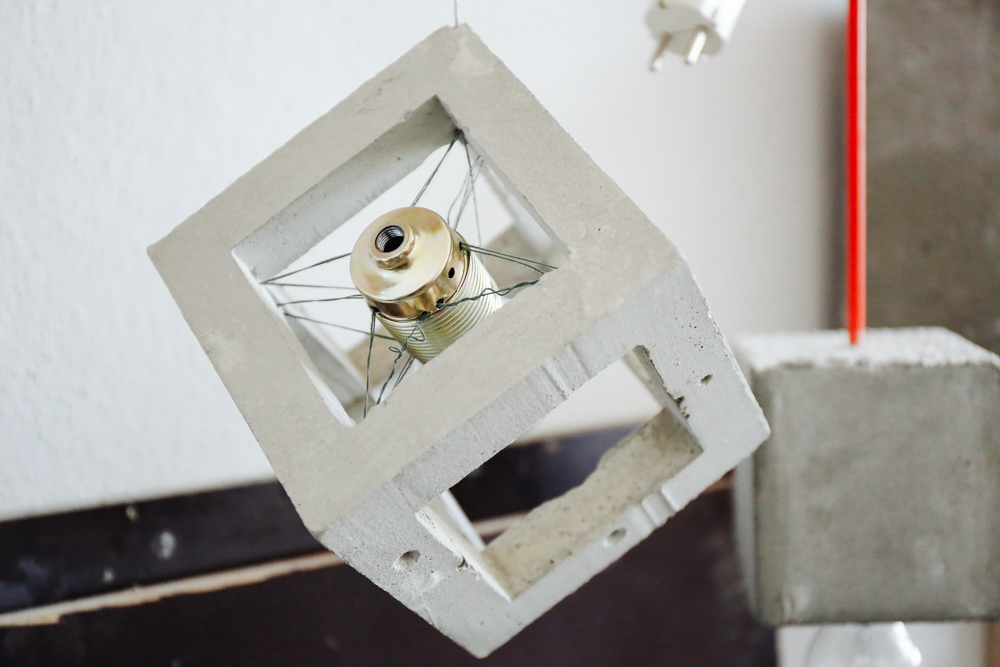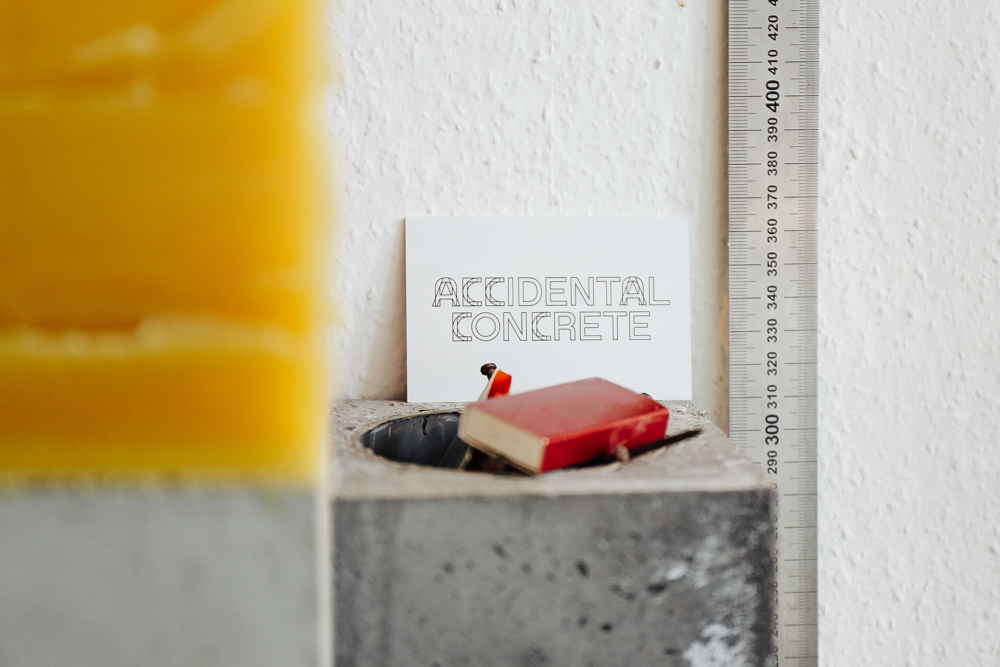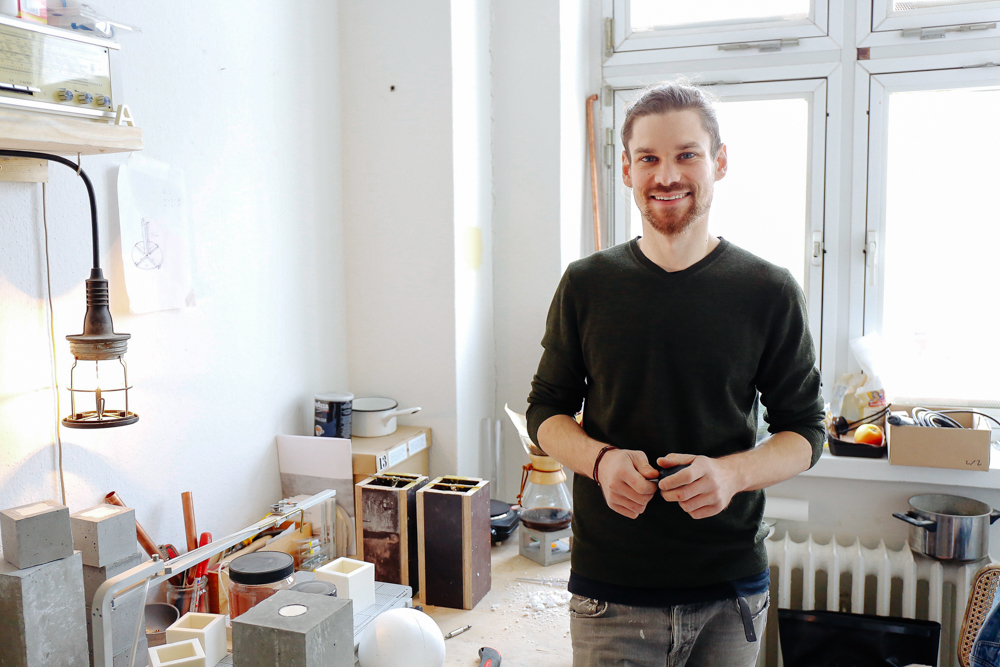[vc_row padding_top=”0px” padding_bottom=”0px”][vc_column fade_animation_offset=”45px” width=”1/1″][text_output]
Jonas Klock
Accidental Concrete
Jonas Klock is the founder of Accidental Concrete, a Berlin-based design label manufacturing handcrafted interior products and custom made furniture.
With a background in architecture, Jonas likes to push concrete’s boundaries, exploring shape and function, whilst embracing the errors that occur when performing design iterations by hand.
Photos by Alice Connew
Please tell us about your background. When did you know you wanted to become and architect and designer?
I actually decided to study architecture when I missed the deadline to apply for a fashion design course. What fascinated me during the whole degree was the range of skills I was trained for. The University of Fine Arts in Berlin offers a lot of freedom in design thinking and along with my experience working for OMA and MVRDV in Rotterdam, it helped me shape my career.
Working on mainly large scale projects and competitions for a few years made me become interested in handcrafted goods and products, where the focus lies on the details, materials and the process of achieving a final outcome. I design each of my custom products according to their specific needs. Working with my hands satisfies me.
Why concrete? How did your love for this material begin?
My graduation project, which I did with a good friend of mine, was a film studio at Spreepark, a former entertainment park in Berlin. Our models were built using concrete, cardboard, wood and acrylic – that’s the range of materials that interests me.
I worked with concrete again during my time in Rotterdam. It started with the creation of a concrete lamp in my balcony and then I became interested in expanding the scale of concrete products and finding ways in which I could build them myself.
Although it doesn’t look like it, concrete is actually a very sensitive material. You have to specifically choose the right casting materials for the mould, in order to create the haptic qualities of the final product. Concrete always conveys a rough and heavy quality, but on the other hand, one is immediately drawn to touch and feel its surface. I once designed a casket for a deceased pet. Its form and meaning took the harshness of the concrete completely and it became the perfect material to protect the remains.
I would like to explore the boundaries of concrete further and search for uncommon and unexpected appearances and finishes.
What are the limitations and advantages of concrete when compared to other traditional furniture materials such as wood or plastic?
I often get asked about the weight of concrete. Sure, it can be limiting in some kind of way but it depends on the scale of the product. Large scale products are not made for flexibility – you have to specifically choose what they’re going to be used for. I’ve noticed how surprised people are about the outcome of certain products when they, for example, touch the smooth surface of a table top. They simply don’t expect it.
Small scale projects made of concrete don’t present any limitations compared to any other material. With concrete you’re able to create any kind of shape as long as you are able to build the right mould.
Apart from concrete, some of your designs have components made of wood. What other materials would you like to experiment with?
I love combining concrete and wood in my designs, and I’m really interested in experimenting with resin.
Tell us about your design process. How do you come up with a concept and develop it?
Once the idea is there, I use 3D modelling to check proportions, fittings and to measure the moulds. After that, I build the moulds, using mainly wood, foam or silicon.
How does your background as an architect influence the way you work as a designer?
My architectural background has a strong influence in my form-finding process from an aesthetic point of view – I am mainly interested in clear geometrical proportions.
Form-finding is mostly a long term process till the point where your ideas of form and function come together, whether this is an architectural project or just designing a casket.
You’ve already designed a wide range of products including vases, lighting and tables. What has been your most challenging design? What other products have you considered making in the future?
I recently collaborated with a glassblower to design an abstract concrete chandelier. I am very happy with the result and would like to extend this collaboration into a few more projects.
Last week, I got a reaction from someone on a kind of brochure I made from a surface pattern, asking whether this could work as an acoustic panel. I am curious to find out! It would involve more professionals but it could be an interesting new project.
In general, there is hardly anything as good as making a customer happy.
What are your main influences?
I follow an online feed daily, filled with images of objects, materials and textures that I absorb. It obviously influences me indirectly and helps me think about new areas to explore. But I basically design what personally feels good and what I would also like to have for myself.
Does Berlin influence your designs in any way? What are your favourite spots in the city?
It does. I grew up in Berlin and around 15 years ago, when I started to explore the city, it looked totally different. Many things have changed in the meantime, which personally pushes me further to the city’s boundaries.
When I first moved out from my family home I went to Mitte – Torstraße, a dead street at that time. I now live in Alt-Treptow, one of the best areas to live in, in my own opinion. I have a studio in Oberschöneweide on the way to Köpenick, a fascinating space with amazing qualities that I probably would have never discovered a few years ago.
Additionally, Berlin still is a bit unconventional and affordable. This is the only way for me to work right now on what makes me happy.
[/text_output][text_output]
SEE ALL THE STORIES [icon type=”angle-double-right”]
You might also be interested in:
[/text_output][vc_row_inner padding_top=”0px” padding_bottom=”0px”][vc_column_inner fade_animation_offset=”45px” width=”1/3″][image type=”none” float=”none” link=”true” info=”none” info_place=”top” info_trigger=”hover” src=”2013″ href=”http://www.thefuturepositive.com/projects/brendan-ravenhill/”][/vc_column_inner][vc_column_inner fade_animation_offset=”45px” width=”1/3″][image type=”none” float=”none” link=”true” info=”none” info_place=”top” info_trigger=”hover” src=”2004″ href=”http://www.thefuturepositive.com/projects/chairyourlife/”][/vc_column_inner][vc_column_inner fade_animation_offset=”45px” width=”1/3″][image type=”none” float=”none” link=”true” info=”none” info_place=”top” info_trigger=”hover” src=”176″ href=”http://www.thefuturepositive.com/projects/lebrel/”][/vc_column_inner][/vc_row_inner][/vc_column][/vc_row]

